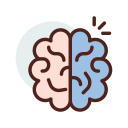Text
SNI ISO/IEC 30141:2018 : internet untuk segala – referensi arsitektur (ISO/IEC 30141:2018 dan ISO/IEC 30141:2018/cor 1:2018, IDT, eng)
loT has a broad use in industry and society today and it will continue to develop for many years to come. Various loT applications and services have adopted loT techniques to provide capabilities that were not possible a few years ago. IoT is one of the most dynamic and exciting areas of ICT. It involves the connecting of Physical Entities (""things"") with IT systems through networks. Foundational to loT are the electronic devices that interact with the physical world. Sensors collect the information about the physical world, while actuators can act upon Physical Entities. Both sensors and actuators can be in many forms such as thermometers, accelerometers, video cameras, microphones, relays, heaters or industrial equipment for manufacturing or process controlling. Mobile technology, cloud computing, big data and deep analytics (predictive, cognitive, real-time and contextual) play important roles by gathering and processing data to achieve the final result of controlling Physical Entities by providing contextual. real-time and predictive information which has an impact on physical and virtual entities.
loT can be integrated into existing technologies. Real-time measurements generated by adding sensors to existing technology can improve its functionality and lower the cost of operations (e.g. smart traffic signals can adapt to traffic conditions, lowering congestion and air pollution). The data generated by loT sensors can support new business models and tailor products and services to the tastes and needs of the customer. In addition to the applications, the technology needs to support supervision and adaptation of the loT system itself.
Several forecasts indicate that loT will connect 50 billion devices worldwide by the year 2020. There are a number of possible application areas, such as smart city, smart grid, smart home/building, digital agriculture, smart manufacturing, intelligent transport system, e-Health. loT is an enabling technology that consists of many supporting technologies, for example, different types of communication networking technologies, information technologies, sensing and control technologies, software technologies, device/hardware technologies. This document is based on widely used enabling technologies that are defined in standards from several organizations such as ISO, IEC, ITU, IETF, IEEE, ETSI, 3GPP, W3C, etc.
Trustworthiness is recognized as an area of importance, and loT can leverage current and future best practice. For example, monitoring and analysing deployed loT systems is essential to maintain reliability and safety and security. Measures such as controlled access can ensure the security of the system.
This document provides a standardized loT Reference Architecture using a common vocabulary, reusable designs and industry best practices. It uses a top down approach, beginning with collecting the most important characteristics of loT, abstracting those into a generic loT Conceptual Model, deriving a high level system based reference with subsequent dissection of that model into the four architecture views (functional view, system view, networking view and usage view) from different perspectives.
Ketersediaan
Informasi Detail
- Judul Seri
-
-
- No. Panggil
-
35.020 KOM s
- Penerbit
- Jakarta : BSN., 2021
- Deskripsi Fisik
-
vii, 82 hlm. : ilus. : bib. ; 29 cm
- Bahasa
-
Indonesia
- ISBN/ISSN
-
ICS 35.020
- Klasifikasi
-
35.020
- Tipe Isi
-
text
- Tipe Media
-
unmediated
- Tipe Pembawa
-
unspecified
- Edisi
-
-
- Subjek
- Info Detail Spesifik
-
-
- Pernyataan Tanggungjawab
-
Komite Teknis 35-05 Internet untuk segala
Versi lain/terkait
Tidak tersedia versi lain
Lampiran Berkas
Komentar
Anda harus masuk sebelum memberikan komentar

 Karya Umum
Karya Umum  Filsafat
Filsafat  Agama
Agama  Ilmu-ilmu Sosial
Ilmu-ilmu Sosial  Bahasa
Bahasa  Ilmu-ilmu Murni
Ilmu-ilmu Murni  Ilmu-ilmu Terapan
Ilmu-ilmu Terapan  Kesenian, Hiburan, dan Olahraga
Kesenian, Hiburan, dan Olahraga  Kesusastraan
Kesusastraan  Geografi dan Sejarah
Geografi dan Sejarah